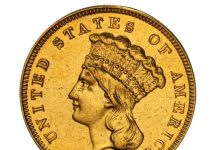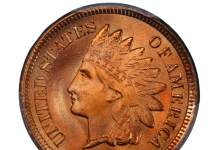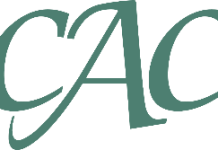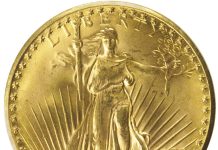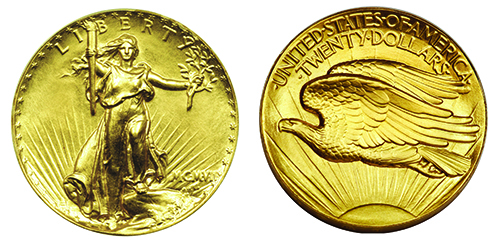
By R.W. Julian
The hobby of numismatics is at a crossroads. The increasing number of counterfeits in the marketplace calls for strong responses, the first of which is the system of third-party grading services. The major coin grading services first thoroughly and meticulously authenticate and confirm a coin’s genuineness before grading it. Collectors need to check the authenticity of suspect coins so that questions will not arise at some future date when the pieces are being sold, either by the owner or in an estate.
Counterfeiting has often been called the “second oldest profession with good reason. Coins were created in the Asia Minor nation of Lydia (located in present-day Turkey) about 600 B.C., and it was not long before criminal elements in that part of the world produced counterfeit coins.
History of Counterfeiting
Modern-day collectors, unless they specialize in ancient coins, have little concern for these early counterfeits, but copies made since 1800 are another matter entirely. During the 19th century, there were several counterfeiters producing high-quality copies of rare Greek and Roman coins, especially the latter. The dealers who specialize in ancients, however, are generally able to distinguish the good from the bad.
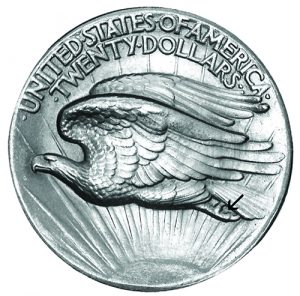
There were counterfeits in 19th century America, but these were usually electrotypes made by carefully joining two shells for the obverse and reverse. The weights were generally wrong, and the presence of a thin joining line around the edge usually gave the piece away. These specimens occasionally show up in old collections but are readily detected by experts.
On the other hand, quality counterfeits of modern coins, especially those of the United States, meant to fool the collector and investor really date only from the 1950s. Beginning in the 1950s in Beirut (Lebanon), a group of criminals began striking various gold coins, both of the United States and various European countries. The forgers concentrated on the U.S. gold dollar as the profit margin, given collector demand was the highest for such pieces. The Beirut people also specialized in the British gold pound because of its long history as a safe investment in the Middle East.
These Beirut counterfeits were somewhat out of the ordinary in that the struck pieces were very close in quality to the originals and the correct amount of gold was found in each piece. The weights were correct and could not be used to identify the bad pieces. The numismatic answer was to publish high-quality photographs of the minor design and lettering mistakes made by the counterfeiters in their dies. This technique of exposing the false pieces is still used by numismatists in the identification of the counterfeits.
Technology Expands Presence of Counterfeits
During the 1960s in the United States, with the invention of sophisticated machines for dental castings, counterfeiters used such equipment to create false coins for collectors. This technique also led to the creation of false dies that were used to strike copies of rare coins for collectors. Such copies are still found in older collections, and when heirs start to sell off some of their holdings there will be some unpleasant financial surprises.
In 1972, Virgil Hancock, in conjunction with the American Numismatic Association (ANA), created the first authentication service. The primary purpose was to weed out the counterfeit pieces from the numismatic marketplace. As in all such efforts, however, the counterfeiters learned from their mistakes, and the bad copies became better copies as time passed.
Some counterfeits, on the other hand, are so bad they are little better than numismatic jokes. Southeast Asia, in particular, is noted for very poor copies of United States rare coins, such as the 1804 dollar.
Emergence of Grading Services
By the mid-1980s, however, matters had gotten much worse, in fact. The plethora of counterfeits in the marketplace, combined with the rising need for a grading system that protected the collector and dealer, led to the creation of grading services. The two best known at this time are NGC (Numismatic Guaranty Corporation) and PCGS (Professional Coin Grading Service). A third such firm is ANACS, an acronym that originally stood for “American Numismatic Association Certification Service,” though it is no longer directly connected with the ANA.
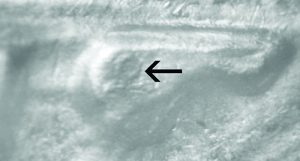
The current counterfeit threat from China, however, is by far the worst seen to date. There is widespread counterfeiting of world coins, especially those of the United States, and this criminal activity is done by Chinese gangs closely allied to an equally corrupt government.
The counter-argument, from those supporting the Chinese, is that their law allows such practices, but it is hardly a secret that regimes of this kind create or change laws whenever convenient and with no public input.
The problem with the Chinese counterfeits is that they will also be a problem in the future. Many such coins have been sold on the internet, especially eBay, and found their way to collections. It is a common practice for grandparents to lay aside coins for grandchildren, and a few decades from now, it is likely that the heirs will get a rude awakening.
Chinese Counterfeits
The Chinese counterfeiting gangs tend to stay away from the extreme rarities in U.S. coinage because the fakes are the more easily spotted. It is said that virtually every U.S. coin struck since 1792 has been forged in China, but the principal targets at present are Morgan dollars and bullion pieces. The weight and fineness are rarely correct.
Although perhaps a surprise, the Chinese are even counterfeiting the modern one-ounce silver Eagles struck by the mints in the U.S. Here, again, the products are sold on the internet and at flea markets to those wishing to invest in silver. The fakes are mostly made of some kind of cheap metal with a thin costing of silver. Fake gold coins from China also exist though not as common as the silver.
Although precise figures are not available, there is little doubt that the grading services receive a considerable number of these Chinese fakes and will no doubt continue to do so.
The problem with fakes, however, is not confined to the coins themselves. The Chinese criminals, in league with their government officials, have turned to duplicating the holders used by the grading services, in particular NGC and PCGS. Not only must collectors determine if a given coin is genuine, but they must also consult a knowledgeable dealer to determine if the slab itself is the real thing.
Steps to Protect
What can be done to protect collectors, and perhaps the very existence of the coin hobby, from the growing Chinese threat?
Perhaps the first step is for the ANA to take a very aggressive first step by publicly attacking the Chinese government.
As a final note, it needs to be mentioned that “native craftsmen” in this country have also produced dangerous counterfeits in recent years. The most famous, or infamous, of these “craftsmen” was the Omega Man. He specialized in the high-relief 1907 Saint-Gaudens double eagles, and these were so good that some of them at first got past the grading services. In due course, however, an astute collector, with a sharp eye for details, noticed an Omega symbol (?) cleverly hidden in the lettering. The cat was out of the bag.
In an odd response to the Omega threat, there is now a demand from some advanced collectors for specimens of the Omega counterfeits. There is no end to the surprises one can find in numismatics.



